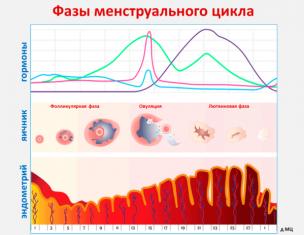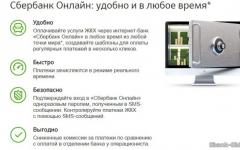Currently, currency symbols of different countries are used everywhere, and no one has a question about why euro, for example, is referred to as €. But the sign of the currency and its designation is an interesting topic, followed by many interesting facts.
Why do you need graphic characters for money?
Few currencies of the world can present their own signs. Without special designations, the following money is cost: Swiss francs, Croatian kuns, Latvian lats, etc. According to the UNICODE World Standard, only thirty global monetary signs have officially recorded graphic characters. Among them there are those that are currently not applied due to the introduction of the euro: this is a symbol of French franc (₣).
It would seem why to write the currency sign of the euro in the form of symbols, if you can write 100 euros, and not 100 €?
There are several factors according to which brief designations of one or another currency are introduced into use:
- Such signs are very comfortable, because as soon as the ruble is not denoted: rub. or ruble. It looks non-original and not always clear for foreigners.
- Have your own designation for currency prestigious. Such monetary signs are automatically referred to strong and successfully developing.

When a state can develop, approve and enable currency sign in Unicode, it can be said that the country has raised its authority at the world level.
Signs of world currencies and main requirements for them
When developing the designation for any country, designers adhere to the following requirements:
- The symbol must consist of one sign. If the designation will have them 2 or more, it will also cause an inconvenience when reading, and complexity in writing.
- It should be easily recognized by citizens of the country, in which this currency is located in everyday life. Excellent if foreigners are recognized, because the symbol of any currency is unique.
- The designation should not depend on the font. The sign should be found in any font system.
- All characters exist in width: if we consider all the designations of currencies, then they are not thicker 0.
- The icon should not be overloaded with additional elements (wavy lines, etc.).
- The symbol must necessarily be unique, not similar to any other.
When developing designations, strict requirements are taken into account, so sometimes similar elements are present: thrust vertical or horizontal, and possibly two. Such symbols denote stability, and this is the main thing that all currencies of the world are striving for.
History of the appearance of the symbol of the Russian ruble
The most famous symbols that designate a specific currency have their own history.

The known designation of the ruble (₽) is presented in the form of the letter P, which crosses the horizontal trait from the bottom. It denotes stability and distinguishes the currency sign from the letter of the alphabet.
In the days of the Russian Empire, the ruble was written differently: the capital letters "P" and "U" were combined. According to the most common version, the letter "P" unfolded at 90 degrees and the letter "U" was written on top. The sign was obtained unique, but it turned out to be difficult, especially in writing.
Therefore, the designation did not fit, and I had to invent a symbol again.
The process of developing the designation of the ruble itself is interesting:
- The Central Bank of Russia conducted 2 competitions on this issue. The first was held in 2007, but all offers did not differ in particular originality.
- The next competition was conducted in 2013, but there was no new version of the ruble symbol.
The design of the designation process was connected to the font design masters: Alexander Tarbeev and Vladimir Efimov.
Now the currency sign is officially recognized as debate (₽), which approved the Central Bank of Russia. The designation is implemented in Unicode.
Symbol of a single currency
The designation of the European Union's currency (€) was approved after a sociological survey of citizens of the Commonwealth member countries. This sign was officially introduced in 1996. The authors are considered four specialists whose data is not disclosed.

The logo is very well chosen. According to the Commission, which took the final decision, the sign demonstrates:
- The significance of the European civilization, because it includes the Greek letter "Epsilon".
- Stability, which is confirmed by two parallel horizontal lines.
- Denerement with Europe (letter E).
The euro is considered one of the youngest monetary units of the planet. Symbols of currencies of the world, such as dollar, yuan and yen signs, have a longer development history.
Where did the designation of $ come from?

With the designation in the form of a Latin letter S, which is crossed by one (two) vertical dash, many residents of the planet are familiar, regardless of whether they face the field of finance or not. The exact version of this designation is unknown, but there are several versions of the origin of the sign:
- Presumably, $ sign has a lot in common with writing us. If you shift u and s to meet each other, we get the designation of the American currency.
- Another version is associated with Spain and its currency - peso. 1 Peso is equal to 8 Realms, when writing to save time it was done - / 8 /. Over time, it may have been simplified by the inscription: one halves remained from the eight, and the slant lines turned into one vertical.
- The next version is also Spanish. PS was used to designate multiple numbers, then the line remained from P, and the letter S became full. Only this version has a documentary confirmation of 1778. In this message, some Olliver Polak first wrote PS, and then corrected $.
- Do not refuse the version associated with Roman themes. The Romans were made to designate sterns like LLS, then writing declined, and it turned out the famous $. It is impossible to refuse this option, because in the US Congress, the upper chamber received the name of the Senate.
- The last option of the origin of $ - the printed sheets were denoted. Before the amount of them was indicated by SH, in this case S reminded the number of spelling 5. Then H was transformed into a line that was imposed on S.
Currently, the most popular currencies in the world are represented including US currencies. And the sign of the American monetary unit is known for the whole world, and to accurately establish where it appeared, it does not seem possible.
Symbol of Ukrainian currency
In Ukraine, the introduction of the designation of their national currency was thought back in 2004. At first, the National Bank of Ukraine held the appropriate competition for the currency sign, in the end the best option was chosen.

The hryvnia is a rather old name of the monetary unit, but it did not have a separate designation. Find the appropriate option was not difficult. The sign of the Ukrainian currency is represented in the form "₴", where the main part of the symbol resembles the letter G, and two horizontal lines are added to it. Dates, as in all other signs, symbolize stability.
Some historians were able to notice the coincidence of the currency designation with the Roman sequel. The symbol indicating 0.5 sequel is exactly similar to ₴, although it is pointless to look for Roman roots in this situation.
Japanese yen and chinese yuan
Yena is the cash currency of Japan since 1871. It is considered the main reserve monetary unit of the world after the American dollar and the euro. This happened due to the steadily developing economy of the rising sun.

International designation ¥, and in the country itself, the hieroglyph is used on the price tags. The official date of the appearance of this sign is considered to be 1953, when the IMF to help restore the Economy of Japan, equatedly 1 yen to 2.5 g of gold. Then the corresponding designation appeared.
In addition, the yen symbol is used for Chinese yuan. When writing yuan should be with one dash, but in practice it is not done.
Sign of English pound
The English pound, despite its decline associated with the brecite, is considered one of the most stable currencies in the world. The sign is indicated - £, which resembles the Latin letter L, supplemented by one or two horizontal dashes in the middle.
The history of the emergence is associated with the ancient Rome and its measurement system. The pound received its name from the phrase "limb weight". In the past, 240 coins were obtained from 1 pound of silver. Therefore, the library or true weight was used to determine the quality of coins or the degree of their worn.
The designation of currencies in the form of symbols is not a mandatory procedure at all, because there are many monetary units in the world that use abbreviations. However, if the state has a separately developed symbol, it is believed that its currency is stable and reliable. Symbols have not only monetary units of countries with a rich historical past. There is a currency sign of the European Union formed recently.









